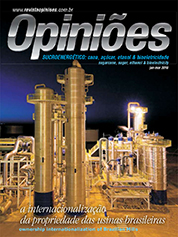Antônio Delfim Netto
Professor Emeritus of the School of Economics and Administration of the University of São Paulo
Op-AA-23
Minefield
In economic theory there is no field with more landmines and subject to ideological conditioning than that of the so-called foreign exchange policy. What can be stated with reasonable certainty is that there is no foreign exchange system (fixed exchange rate, exchange rate dirty float or free float) that is “the best” in any situation.
Experiences with the “gold standard” and the foreign exchange rate fluctuation in the 1920’s made it quite clear that economic policy of open economies has to deal with a famous “trilemma”: it is not possible to simultaneously have, 1. freedom of capital movement; 2. an independent monetary policy and 3. a foreign exchange rate that results in the conciliation of the wanted economic growth rate and the lowest possible unemployment rate.
This fact was addressed in the debate (within the League of Nations) between Ragnar Nurkse and Gottfried von Haberler even before the IMF was created and the Bretton Woods Conference took place (July 1944). The latter adopted a “mixed” system: periodi-cally adjustable foreign exchange rates, under that institution’s supervision.
Already in the 1950’s, economists (particularly Robert Triffin) were calling attention to the inconveniences and asymmetries created by such mechanism, especially concerning “the weight of the adjustment falling entirely on the debtor”, which could only be settled with reserves built up as a “reserve currency” (the US dollar).
Triffin’s proposed solution (and that of many others) encompassed the internationalization of assets as “reserves” of all countries and, eventually, the creation of a Global Central Bank. Curiously, after 60 years, this is what is hidden in the current debates within the G-20. This is what the bureaucrats at the IMF seek to achieve, hoping that it would become such Global Central Bank and inherit the power to control all countries.
Given that monetary policy and the foreign exchange rate depend on fiscal policy, the bureaucrats at the Global Central Bank, from atop of a false “science” (which inspires monetary policy), would dictate economic policy of each and every country. In the end and finally – as a friend of mine would say – a small group of bureaucrats (selected only God knows how!), the pretense detainers of a true “science”, would usurp a considerable chunk of incumbent power elected through universal suffrage.
It is increasingly evident that countries are incapable of controlling “waves” of speculative capital movements without seriously compromising economic growth, the level of employment, and preventing the impact on the inflation rate. Like all financial assets, the foreign exchange rate, when there is freedom of capital movement, instantly adapts to “market pressures”, whereas prices and wages take longer, resulting in real costs to the economy.
It is an outright myth to believe this can simply be corrected by increasing the degree of “opening”. It is also mythical to believe that the foreign exchange rate freely set by the “market” is a “natural” phenomenon and that therefore any government intervention would only increase the imbalance. In fact, with a flexible exchange rate and ample freedom of capital movement, monetary policy and the exchange rate result from a simultaneous adjustment (which is far from bringing about social well-being) accomplished through interest rate differentials.
Brazilian experience shows that perverse foreign exchange imbalances may last many years, to the extent of changing the productive structure (exports and imports) in a definitive way, while not taking into consideration productive sophistication and diversification of the exporting sector, essential factors for permanent and sound economic growth.
That is why even now, when some countries are intervening to limit the appreciation of their foreign exchange rate and reducing its effects on the productive structure, others are setting their exchange rate to the US dollar, while still some others are increasing their exchange rate to attract capital and attempt to limit its devaluation.
This situation was predictable more than 30 years ago and the effects of excessive capital mobility were so damaging that James Tobin proposed the creation of the Tobin fee, which was intended to be internationally accepted and managed by each country and would apply to all operations nominated in other currencies.
Thus, there is no reason to suggest that defensive government activism, aimed at influencing the setting of the exchange rate, is a “mortal sin”: this is an outright myth, not theoretically or empirically supported. At most, it is an ideological outcome. Had Tobin been heard when in 1972 he suggested “to throw some sand” into the highly efficient and well lubricated capital mobility (and salacity) mechanism, perhaps one might have spared humanity the suffering caused by a great number of crises that interrupted econ omic growth.




